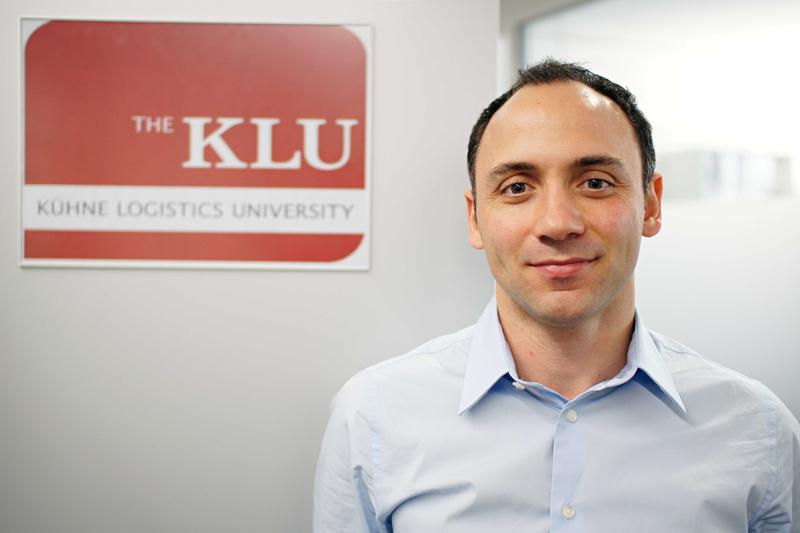Smartphone, tablet and computer returns – a nuisance or a new business model for manufacturers
“Unconditional return within 30 days,” “Money back guarantee within 60 days,” “100% refund if you’re not 100% satisfied.” At first glance, modern marketing is customer-oriented but as usual, it has one goal: making a sale. However, the more products customers return to the manufacturer, the more difficult this goal is to achieve. Dr. Çerag Pinçe, Assistant Professor of Operations and Supply Chain Management at Kühne Logistics University (KLU) in Hamburg, has an explanation for why it pays manufacturers to refurbish returned goods.
In the electronic consumer goods area, the manufacturers’ offensive marketing strategies of recent years have led to significant growth in revenues. At the same time, they have created a problem that requires a solution: more and more products are being returned. “The manufacturers seem to be drowning in their own productivity and successful sales strategy,” said Pinçe. “They urgently need a model for mastering the flood of returns and avoiding paying extra for them.” It is important to know that 60-80 percent of the returned products do not have any defects.
“Customers have the feeling that they are not taking a risk when purchasing products and can easily reverse impulsive purchase decisions. No wonder everyone is taking advantage of the manufacturers’ offers,” added Pinçe. In the US, the annual total value of consumer electronics products returns is between $15 and $18 billion – 11-20 percent of the total sales in this segment. Since the vast majority of consumer electronics products have a memory that contains personal information, the goods that customers return cannot simply be re-packaged and put back on store shelves.
“Until now, producers have tried to keep the added costs that returns generate in check by producing top quality products,” he said. After all, top quality implies a longer service life, resulting in fewer complaints and returns. But the issue has now become one of maintaining profit margins in the face of the increase in returns.
Pinçe analyzed new approaches to handling returns and found out that there are primarily three options that can lead to very different results:
Write off or recycle the products
Refurbish the products and sell them at lower prices
Refurbish the products and satisfy the warranty claims
The latter two options are the most interesting ones, since manufacturers only have extra costs when they recycle products and recycling excludes profit-oriented resale.
Refurbished products yield better margins since the cost of refurbishing is typically much lower than the cost of producing a new product. On the other hand, selling them can cannibalize the sales of new products. Refurbishing in order to satisfy warranty claims does lead to cost savings because customers do not receive new products as compensation. This way, however, manufacturers lose their business of reselling refurbished smartphones, tablets, etc.
The conventional wisdom in the academic literature is that refurbishing and selling is the way to go as long as the costs of refurbishing are economically justifiable. Pinçe, on the other hand, has found that for consumer electronics original equipment manufacturers (OEMs), refurbishing to fulfill warranty claims is actually better in the majority of the cases. This is because products that are refurbished and re-sold also generate warranty and money-back guarantee costs. Refurbishing for warranty coverage, however, absorbs these costs.
“Exactly when the OEMs put the refurbished products into the market also makes a big difference. Our analysis shows that OEMs should build up refurbished stocks at the early stages of the life cycle to prepare for warranty claims that arrive at later stages,” said Pinçe. Warranties flood in later in the life cycle and the OEMs are better prepared to respond when they have proactively refurbished and postponed refurbished product sales to later stages in the life cycle. He added: “Current practice is the exact opposite: most OEMs are probably introducing their refurbished products to the market too early. Deciding against refurbishing, whether for satisfying guarantee claims or selling new products, is never the right choice in the consumer electronics segment.”
The expert for operations and supply chain management based his numerical calculations on the following information:
Material and return costs (always borne by the manufacturer) for various smartphones and tablet computers
Refurbishing costs (according to the internal information of industry experts)
A return rate of 10-20 percent (in the US)
60-80 percent of the returned products do not have any defects
An average of under 5 percent of the cases are true guarantee cases
Professor Pinçe’s analyses are eagerly received by the professional world and the industry in particular – for example, at this year’s 9th Hi-Tech Electronics Supply Chain Summit in Amsterdam (http://events.eft.com/hitech/conference-speakers.php) and at the Hi-Tech Supply Chain Summit (http://www.vonlanthengroup.com/EVENTS/Hi-Tech-Supply-Chain-Summit/) scheduled for October 26-27 in Berlin, where Professor Pinçe will give one of the keynotes.
Contact: Professor Çerag Pinçe
Weitere Informationen:
https://www.the-klu.org/recent-press-releases/
Die semantisch ähnlichsten Pressemitteilungen im idw


